#Extruder
Photo

Extruder
As the invasion drew closer, Urza's means began to resemble Phyrexia's end.
Artist: Mark Tedin
TCG Player Link
Scryfall Link
EDHREC Link
#mtg#magic the gathering#tcg#$0.02#mark tedin#extruder#modern horizons 2#artifact#creature#juggernaut
18 notes
·
View notes
Text

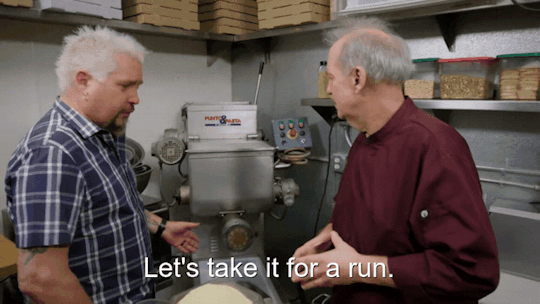

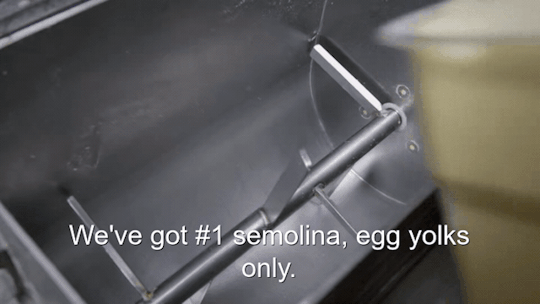

[Okay, I see that you've got an extruder. Let's take it for a run. Let's do it. We've got #1 semolina, egg yolks only. Okay. Makes a nice, rich pasta.]
#s28e18 italian hawaiian and more#guy fieri#guyfieri#diners drive-ins and dives#nice rich pasta#egg yolks#extruder#run
2 notes
·
View notes
Text
What Happens Inside Your Hotend?
Have you ever been curious about what’s happening inside the hotend of your 3D printer? It might seem straightforward: filament melts, it’s pushed out, and repeat. But is there more to this story than meets the eye? Well, a team of researchers led by Marc Kreutzbruck from the University of Stuttgart decided to dig deeper into the mystery by using a CT scanner to peer inside the inner workings of…

View On WordPress
3 notes
·
View notes
Text
youtube
#fabricaçaoerecuperaçaodecanhãoeroscas#screwandbarrels#canhaoerosca#fabricaçaoerecuperaçaodecilindroseroscas#canhãoeroscaoficial#desenhomecanico#roscaplastificadora#extruder#pavanzanetti#blowing#fitilho#troca tela#caixa de rolamento#Youtube
3 notes
·
View notes
Text
Some work of mine.
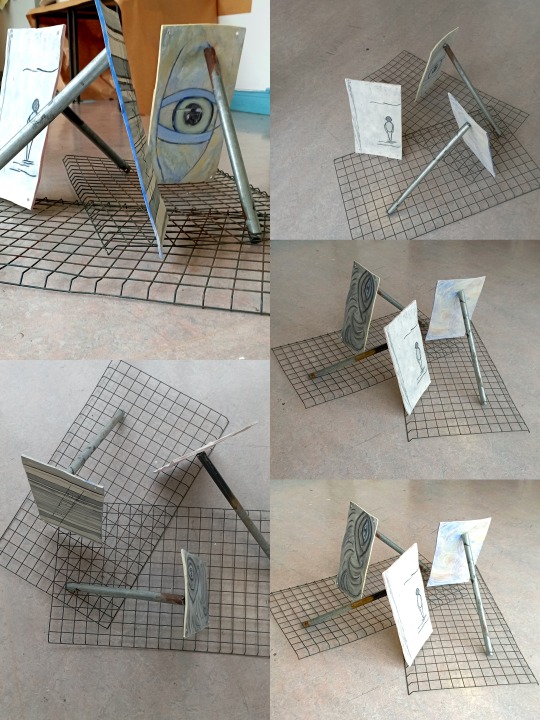
Bits and pieces.
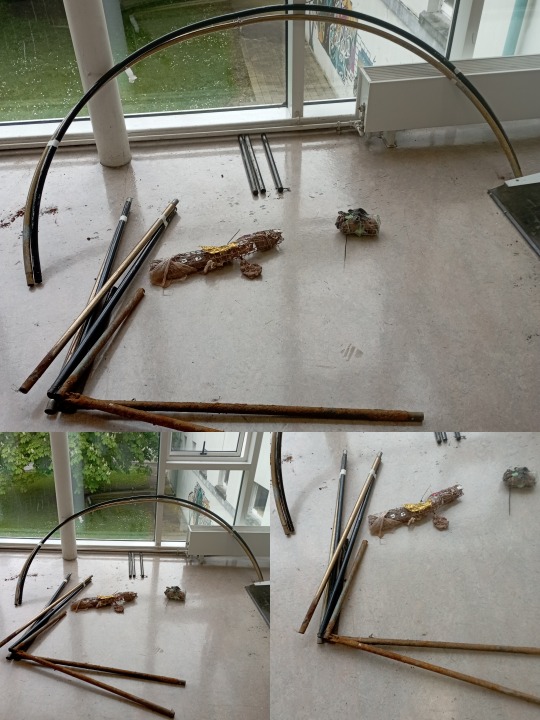
An old polytunnel to be reused for my brief
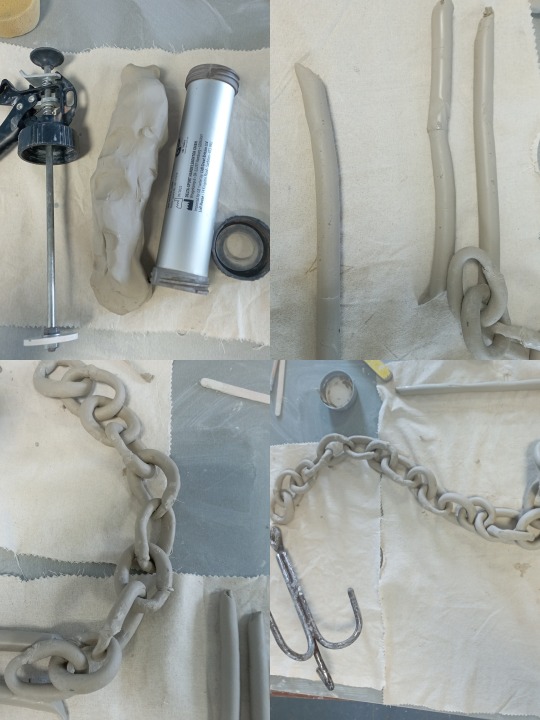
Using ideas taken from artist Richard Slee.
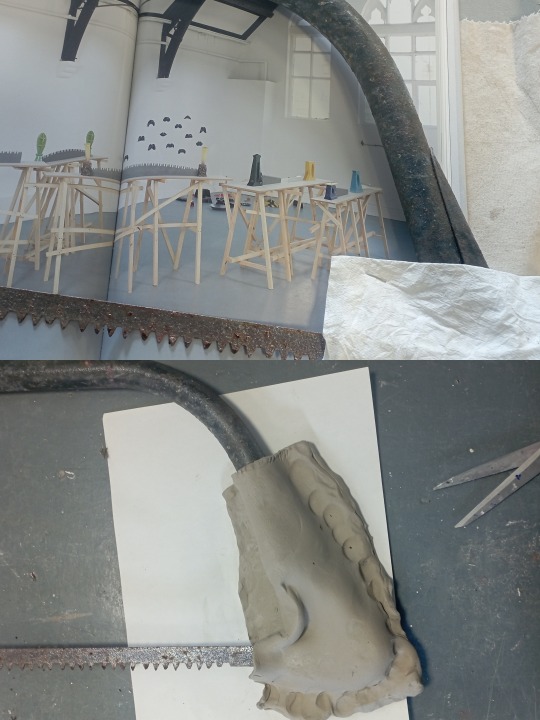
Trying to come up with a way to make a ceramic handle that I can attach to the bow saw.
0 notes
Video
youtube
square wave chips extruder fryums papad pellet food machine wheat potato...
#youtube#wave chips#square chips#fryum#fryums#papad#pellet#pallet#food#machine#food machine#extruder#extruder machine#pellet machine#pallet machine#fryum machine#fryums machine#papad machine#papad extruder#wheat chips#food extruder#snack extruder#chips machine#chips extruder#snacks extruder#pallet extruder#pellet extruder
0 notes
Text
manufacturer of extruder machines,shredders,pelletizers,mixers
0 notes
Text
adjust the slot dimensions for granule size and shape
When adjusting the slot dimensions in die plates for EPS granulators to achieve desired granule size and shape, several factors should be considered. Here are some additional factors to take into account:
EPS Material Properties: The properties of the EPS material being processed, such as its density, melt flow index, and viscosity, can influence how the slot dimensions affect granule size and shape. Different EPS materials may respond differently to changes in slot dimensions, so understanding the specific characteristics of the material is important.
Granulator Operating Parameters: The operating parameters of the granulator, including the feed rate, cutting speed, and temperature, can impact the granulation process. Adjustments to slot dimensions should be made while considering these parameters to ensure compatibility and optimize the granule size and shape.
Cutting Mechanism: The type and condition of the cutting mechanism in the granulator, such as the blades or knives, can affect the effectiveness of the granulation process. Ensure that the cutting mechanism is properly adjusted, maintained, and aligned with the die plate slots to achieve consistent and desired granule size and shape.
By considering these factors and conducting systematic adjustments while closely monitoring the granulation process and resulting granules, you can effectively optimize the slot dimensions to achieve the desired granule size and shape in EPS granulation by EPS granulator.
0 notes
Text
Complete Guide of All Pharmaceutical R&D Equipment
Coating Machines
Efficient Small-Batch Tablet Coating Solution for Pharmaceutical R&D.
The Pharma R&D Tablet Coater is a groundbreaking, self-contained film coater designed for smaller trial batches of tablets and granules. Its sleek exterior is made of durable SS 304 stainless steel, and it features a precision-coating pan positioned at a tangential angle of 35° to 45°, ensuring efficient and uniform coating for pharmaceutical research and development.
pharmaceutical research and development – the R&D tablet coating machine.
The R&D Coater is a versatile and semi-automatic unit designed for pharmaceutical research and development. This integrated system comprises a stainless steel coating pan, a precision spraying system, a hot air blower, and an efficient exhaust system. It harnesses the rotary motion of the coating pan to gently tumble the tablets or granules contained within it. Inside the pan, strategically placed baffles tilt the contents to ensure uniform and efficient coating.
For film coating, a specialized spray gun is employed to disperse finely nebulized droplets of the coating solution onto the moving bed, ensuring consistent coverage across all tablets. To complete the process, a stream of hot air is directed onto the tablet bed, with the exhaust temperature ranging between 60°C and 80°C, enhancing overall performance.
The advanced control panel offers precise control over various settings, including temperature and rotation speeds, allowing for tailored adjustments to meet specific research needs. When introducing tablets or granules into the pan or retrieving them, a scoop should be used. The optimal parameters for coating should be determined through experimentation and trials, ensuring the highest quality results in pharmaceutical research and development.
Fluidized Bed Processor
The Fluidized Bed Processor is a versatile solution tailored for the research and development needs of various industries, including pharmaceuticals, chemicals, food production, and academic institutions like pharmacy colleges. Its primary functions involve coating and drying pellets, allowing for a wide range of applications, such as:
Color Modification: Altering the color of pellets for specific requirements.
Improved Taste: Enhancing the taste of pharmaceutical or food products.
Modified Release: Achieving controlled and modified release forms.
Moisture and Oxygen Protection: Safeguarding products from environmental factors.
Granulation Machine
A rapid mixer granulator is a pharmaceutical equipment designed for the efficient mixing and granulation of powders to produce uniform and high-quality granules. It plays a crucial role in the pharmaceutical industry, particularly in tablet manufacturing. The key components of a rapid mixer granulator include a cylindrical mixing bowl, an impeller, and chopper blades. The mixing bowl accommodates the dry powders or granules, and the impeller provides rotational movement, creating a vortex within the bowl. Simultaneously, the chopper blades introduce additional shearing forces, breaking down agglomerates and ensuring thorough mixing.
The working principle of a rapid mixer granulator involves a series of sequential steps to achieve optimal granulation. Initially, dry powders or granules are loaded into the mixing bowl. As the impeller and chopper blades rotate, they create a controlled and dynamic mixing environment. A liquid binder is then added to the rotating powder bed, leading to the formation of wet mass. The impeller and chopper blades work together to break down any lumps, disperse the liquid binder uniformly, and induce granulation. The resulting granules exhibit improved flow properties, uniform size distribution, and enhanced compressibility, making them ideal for subsequent tablet compression processes in pharmaceutical manufacturing.
Fluid Bed Top Coater
A fluid bed top coater is a pharmaceutical processing equipment designed for coating granules or particles with a thin layer of coating material. This coating process is commonly used in the pharmaceutical industry to enhance the properties of the granules, such as taste masking, controlled release, or protection of active ingredients. The equipment consists of a perforated bed through which air is blown, creating a fluidized bed of granules. The coating material is sprayed onto the fluidized granules, ensuring even distribution and uniform coating.
The working principle of a fluid bed top coater involves several steps. Initially, the granules to be coated are placed in the fluidized bed. Air is then introduced at a controlled rate, creating a fluidized state where the granules become suspended and behave like a fluid. This fluidized bed provides an ideal environment for uniform coating. The coating material, often in the form of a liquid solution or suspension, is sprayed onto the fluidized granules through a nozzle system. The fluidized state ensures that each granule receives an even and consistent coating. After coating, the granules are dried by continued airflow until the desired coating thickness is achieved. The fluid bed top coater's efficient and precise coating process is crucial for achieving the desired pharmaceutical product characteristics.
lab-scale fluid bed dryer
A lab-scale fluid bed dryer is a small-scale version of the industrial fluid bed dryer and is widely used in laboratory settings for drying, granulating, and coating small quantities of pharmaceutical or chemical materials. It operates on the principle of fluidization, where air is used to fluidize and suspend particles, creating an efficient drying or coating environment. The equipment typically consists of a drying chamber, a perforated bed, a fan system, and controls for temperature and airflow.
In its working process, the lab-scale fluid bed dryer first places the material to be dried or processed on the perforated bed within the drying chamber. Air is then forced through the bed from below, causing the particles to become suspended and behave like a fluidized mass. This fluidized state allows for efficient heat transfer, leading to rapid and uniform drying of the material. The temperature and airflow are controlled to achieve the desired drying conditions.
For coating applications, a liquid coating material can be sprayed onto the fluidized particles, ensuring a uniform and controlled coating thickness. The lab-scale fluid bed dryer is advantageous for research and development purposes, allowing scientists and researchers to experiment with different drying or coating parameters on a smaller scale before scaling up to industrial production.
Lab-Scale Extruder & Spheronizer Combo
Lab-Scale Extruder and Spheronizer Combo is a seamlessly integrated system poised to redefine granulation in formulation research and product development. The Extruder component, featuring four interchangeable heads, facilitates versatile low-pressure granulation techniques on a bench-top scale, accommodating batches as small as 200 grams. Its adaptability and indicative results make it a cost-effective and efficient solution for evaluating diverse formulations.
Complementing the Extruder, the Spheronizer component offers precise control over spheronization processes, featuring a substantial 230 mm diameter friction plate capable of producing spheres ranging from 0.5 mm to 10.0 mm. With user-friendly features such as easy disassembly, GMP design, variable plate speeds, and a dedicated stainless steel control panel, this dynamic duo empowers researchers and product developers to seamlessly progress from extrusion to spheronization, unlocking new possibilities for innovation in pharmaceuticals, chemicals, and the food industry. The Extruder and Spheronizer Combo stand as a cohesive and powerful platform, representing a significant leap forward in granulation technology.
Lab-Mini Screw Extruder: Tailored Solutions for Pharmaceutical Pelletization
A mini screw extruder is a compact and versatile piece of equipment used in laboratories or small-scale production settings for extruding and processing various materials. It operates on the principle of using a rotating screw to push, melt, and shape materials into a desired form. This equipment is commonly employed in the plastics, food, and pharmaceutical industries for tasks such as compounding, mixing, and forming different shapes.
In its working process, the mini screw extruder takes raw materials in solid or pellet form and feeds them into the extrusion chamber. The rotating screw applies heat and pressure, causing the material to soften and take on the desired shape as it passes through the die. The mini screw extruder's compact size and adaptability make it a valuable tool for small-scale experimentation and development of new formulations or processes.
Lab Mini Spheronizer
A Mini Spheronizer is a laboratory-scale equipment used in pharmaceutical and chemical industries for spheronization, a process that involves shaping and rounding extruded material into spherical pellets or beads. It operates by rotating a disc at high speeds, causing the extruded material to form spherical shapes through constant rolling and friction.
Hot Melt Extruder
A Hot Melt Extruder is a compact apparatus used for pharmaceutical and polymer processing. It employs heat to melt and extrude materials, facilitating the production of solid dispersions, implants, or controlled-release formulations. This equipment is particularly useful for processing thermolabile substances by minimizing exposure to high temperatures.
Die Roller Extruder
A Die Roller Extruder is a machine designed for the continuous extrusion of various materials, including plastics and pharmaceutical formulations. It consists of rollers that compress and shape the material as it passes through the die. This extrusion process is widely utilized in industries where continuous and uniform shaping of materials is essential, allowing for efficient production of consistent profiles or forms.
All-Purpose Mixing Machine
An all-purpose mixing machine in the pharmaceutical industry is a versatile piece of equipment designed to efficiently blend various ingredients, such as powders, granules, or liquids, to achieve a homogeneous mixture. It plays a crucial role in pharmaceutical manufacturing processes, contributing to the production of formulations like tablets, capsules, and suspensions. These mixing machines are adaptable to different batch sizes and offer flexibility in accommodating diverse formulations and production requirements.
The working principle of an all-purpose mixing machine involves the integration of a mixing vessel or bowl, agitators, and sometimes choppers or blades. The dry or liquid components are loaded into the mixing vessel, and the agitators create rotational or shearing forces to ensure uniform distribution of the ingredients. Choppers or blades may be employed to break down agglomerates and further enhance mixing. The speed and duration of the mixing process are controlled to achieve the desired level of homogeneity. The all-purpose mixing machine is crucial for maintaining product quality, consistency, and meeting regulatory standards in pharmaceutical manufacturing.
A Table Top Transdermal Patch Machine
A Table Top Transdermal Patch Machine in the pharmaceutical industry is a compact and specialized apparatus used for the production of transdermal patches. These patches are designed to deliver medication through the skin, providing a controlled and sustained release of the active pharmaceutical ingredient. The table-top version is typically smaller in scale, making it suitable for laboratory or research settings where small batches of transdermal patches can be developed and tested.
The working principle of a Table Top Transdermal Patch Machine involves the precise combination of drug-containing adhesive layers, backing materials, and protective liners. The machine applies pressure and heat to laminate these layers, ensuring a consistent and reliable transdermal patch. The compact design allows for ease of use in smaller-scale experiments, making it a valuable tool for researchers and formulation scientists.
Advanced TDP & ODF Machine Pilot Scale
An Advanced TDP & ODF Machine Pilot Scale is a sophisticated piece of equipment used for the development and production of transdermal patches and orally disintegrating films (ODFs) on a larger pilot scale. This machine integrates advanced features to handle increased production volumes and maintain precise control over the manufacturing process. It is crucial in the pharmaceutical industry for scaling up the production of transdermal patches and ODFs, both of which are innovative drug delivery systems.
In operation, the Advanced TDP & ODF Machine Pilot Scale follows a similar principle to the table-top version, involving the precise assembly of multiple layers and the application of pressure and heat to create transdermal patches or ODFs. The advanced features of this machine enhance efficiency, accuracy, and scalability, making it an integral part of the pharmaceutical manufacturing process for these specialized drug delivery systems.
Maze Master Software Interface and Digital Plethysmometer
Behavioral instruments such as the Maze Master Software interface and Digital Plethysmometer play crucial roles in experimental setups focused on assessing and quantifying animal behavior in research settings. The Maze Master Software interface is a tool designed for managing and analyzing data from behavioral experiments conducted in mazes. It provides a user-friendly platform to control maze environments, record animal movements, and analyze behavioral metrics. Researchers can customize experiments, track parameters, and obtain valuable insights into aspects like learning, memory, and spatial navigation.
The Digital Plethysmometer is an instrument used to measure changes in blood flow and volume in small animal extremities, often tails, for assessing peripheral perfusion. This device aids in studying vasomotor responses and is particularly valuable in cardiovascular and pharmacological research. The plethysmometer records changes in limb circumference or blood volume based on alterations in infrared light transmission. Researchers can use this data to understand vascular reactivity and evaluate the effects of various interventions on peripheral blood flow.
Both instruments contribute significantly to the field of behavioral and physiological research by providing accurate, reproducible, and quantifiable data essential for understanding various aspects of animal behavior and physiology.
Radial Arm Maze:
The Radial Arm Maze is a widely used behavioral test in neuroscience and pharmacology to assess spatial learning and memory in rodents. It typically consists of a central platform with multiple arms extending radially. Each arm is baited with a reward, and the subject, usually a rat or mouse, learns to navigate and remember which arms contain the rewards. The working principle involves the rodent relying on spatial cues to efficiently locate and retrieve the rewards while avoiding previously visited arms. Researchers analyze the choices made and the time taken, providing insights into cognitive functions, memory, and spatial navigation abilities.
Morris Water Maze:
The Morris Water Maze is a classic spatial memory and learning test for rodents, particularly mice and rats. It comprises a large pool of opaque water, with a hidden platform submerged just below the water's surface. Animals learn to locate the hidden platform using spatial cues around the room. The working mechanism involves the subjects forming a cognitive map of the environment and adjusting their strategies over trials. Researchers measure parameters like escape latency and path length, offering valuable data on spatial learning, memory consolidation, and cognitive flexibility. The Morris Water Maze is a versatile tool in neuroscience for studying various neurological conditions and the effects of pharmacological interventions.
Open Field Maze:
The Open Field Maze is a commonly used apparatus in behavioral research to assess general locomotor activity, exploration, and anxiety levels in rodents. It consists of a large, open arena with defined zones. The working principle involves placing the animal in the center and allowing it to explore the environment freely. Researchers observe and record behaviors such as distance traveled, time spent in the center versus the periphery, and grooming activities. The Open Field Maze provides insights into anxiety-related behaviors, locomotor activity, and the effects of pharmacological interventions on exploratory behavior in preclinical studies.
Elevated Plus Maze:
The Elevated Plus Maze is a well-established test for evaluating anxiety-like behavior in rodents. The maze features two enclosed arms and two open arms elevated above the ground, creating an approach-avoidance conflict. Animals, typically rodents, are placed on the central platform and can choose between the open and enclosed arms. The working mechanism involves the innate tendency of rodents to explore novel environments while balancing the fear of open spaces. Researchers measure parameters such as time spent in open and closed arms, entries into each arm type, and overall exploration behavior. The Elevated Plus Maze is valuable for studying anxiety-related disorders and assessing the anxiolytic or anxiogenic effects of pharmaceutical compounds.
T-Maze:
The T-Maze is a classic apparatus used in behavioral neuroscience to investigate spatial learning and memory in rodents. Its structure resembles the letter "T," with a stem and two arms forming the crossbar. During a trial, an animal, often a rat or mouse, is placed at the base of the stem and given the choice to turn left or right. One arm is typically baited with a reward, while the other remains unrewarded. The working principle involves the rodent using spatial cues to remember and choose the correct arm containing the reward. Researchers analyze the animal's choices, latency to make a decision, and memory retention, providing valuable insights into spatial cognition and memory processes.
Y-Maze:
The Y-Maze is another widely used apparatus for assessing spatial working memory and spontaneous alternation behavior in rodents. It consists of three arms forming the shape of the letter "Y," and animals are allowed to explore the maze freely. The working mechanism involves the innate tendency of rodents to alternate between the arms during successive entries. Researchers record the sequence of arm entries and analyze the percentage of spontaneous alternations as an indicator of spatial working memory. The Y-Maze is particularly useful in preclinical studies to investigate the effects of drugs or genetic manipulations on short-term memory and spatial cognition.
Zero Maze:
The Zero Maze is a specialized apparatus used in behavioral research to assess anxiety-like behavior in rodents. It consists of a circular platform elevated above the ground with two enclosed areas and two open areas. The circular design aims to create a conflict between the natural exploratory behavior of rodents and their aversion to open spaces. The enclosed areas offer a sense of security, while the open areas induce anxiety. The working principle involves placing the animal in the center of the maze and monitoring its preference for exploring the enclosed or open sections. Researchers analyze parameters such as time spent in open and closed areas, entries into each zone, and the overall anxiety-related behavior. The Zero Maze is valuable for studying anxiolytic or anxiogenic effects of drugs and understanding the neural mechanisms underlying anxiety.
Light/Dark Box:
The Light/Dark Box is a widely used apparatus in behavioral neuroscience to assess anxiety-like behavior in rodents, primarily mice and rats. It consists of two compartments: one brightly illuminated (light compartment) and the other dark and enclosed (dark compartment), connected by an opening. The working mechanism leverages the rodents' natural aversion to brightly lit and open spaces. Animals are placed in the dark compartment and given the choice to explore the light area. Researchers monitor behaviors such as time spent in each compartment, entries, and latency to enter the light area. The Light/Dark Box provides insights into an animal's response to conflicting motivations of exploration and aversion, making it a valuable tool for studying anxiety-related behaviors and evaluating the effects of pharmacological interventions.
Aesthesiometer
An aesthesiometer is a medical instrument designed to measure an individual's sensitivity to tactile stimuli, providing quantitative assessments of their sensory perception. It is commonly used in neurological examinations to evaluate the integrity of sensory pathways and detect abnormalities in touch sensitivity. The instrument typically consists of a calibrated rod or filament with a controlled diameter, which is applied to the skin at varying pressure levels. The examiner adjusts the force applied by the aesthesiometer until the individual being tested perceives the sensation. This threshold of perception is then recorded, allowing clinicians to assess and monitor changes in sensory function, particularly in patients with neurological disorders or peripheral neuropathies.
The working principle of the aesthesiometer involves systematically applying the calibrated filament to specific areas of the skin, such as the fingertips or toes, while gradually increasing the force. The individual undergoing the test provides feedback when they first sense the touch, and the corresponding force or pressure required to elicit the sensation is measured. The aesthesiometer allows for precise and reproducible assessments of tactile sensitivity, aiding in the diagnosis and monitoring of conditions affecting the sensory pathways. Clinicians use this information to evaluate the severity of sensory deficits, track changes over time, and tailor appropriate interventions for patients with sensory impairments.
0 notes
Photo

Extruder
As the invasion drew closer, Urza's means began to resemble Phyrexia's end.
Artist: Mark Tedin
TCG Player Link
Scryfall Link
EDHREC Link
16 notes
·
View notes
Text

29 Ekim Cumhuriyet Bayramımız Kutlu Olsun.
https://www.ustunismakina.com.tr/plastik-geri-donusum-makinalari
#recycle#plastic#plasticrecyclingmachine#plastikgeridönüşüm#plasticrecycling#machine#extruder#üstünişmakina#washingline#shredder#crusher#crt#recycling#granule#grinder#screenchanger#machining#manufacturing#metalmanufacturing
0 notes
Text
Plastic Extruder
A plastic extruder is a device that uses molten plastic to push through a die and produce a continuous profile to produce a variety of plastic items. Extrusion is a prominent production technique in the plastics sector since it is both extremely effective and economical. The plastic is heated and melted, then mixed, shaped, cooled, and cut into the desired shape as part of the plastic extrusion process. Construction, agricultural, automotive, and packaging are just a few of the industries that employ plastic extruder machines due to their adaptability.
Types of Plastic Extruder
SJ Single Screw Extruder
Read More
SJ Single Screw Extruder
SJSZ Conical Twin Screw Extruder
Read More
SJSZ Conical Twin Screw Extruder
The Advantages of Using a Plastic Extruder in the Manufacturing Process
Construction Machinery Spare Parts Case
Elephant Fluid Power produces stirring motor BMH500 (replaces OMH500) of the same quality as the original, A11VLO, A4VG series plunger pumps, which are used for pump truck production, repair, maintenance and refurbishment, reducing sales and end-user production costs and increasing productive forces. Elephant Fluid Power has a fast delivery time, provides good technical support and after-sales service, and reduces customers' worries.
The Components of A Plastic Extruder and How They Work
A standard plastic extruder is made up of a hopper, a feeding system, a barrel, a screw, a die, and a cooling system, among other parts. Plastic pellets are put in the hopper to be fed into the extruder. The feeding mechanism regulates how quickly plastic enters the barrel. The barrel holds both the die, which shapes the molten plastic into a continuous contour, and the screw, which compresses and melts the plastic.
As the finished product emerges from the die, the cooling system chills and solidifies it. These elements combine to effectively generate a range of plastic items. The output and caliber of the finished product may be varied by changing the shape and speed of the screw.
The Materials Used with A Plastic Extruder
A plastic extruder can work with a wide variety of materials, including both thermoplastic and thermosetting materials. Thermoplastics, such as polyethylene (PE), polypropylene (PP), polystyrene (PS), and PVC, are widely used in extrusion due to their ability to be melted and cooled repeatedly without undergoing any chemical change or degradation. Thermosetting plastics, such as phenolic resins, epoxy resins, and melamine-formaldehyde, are used in the extrusion of electrical components and other specialized applications. Moreover, composite materials, including wood-plastic composites and thermoplastic elastomers, have been used extensively in the construction industry. Such versatility makes plastic extruders a cost-effective solution for manufacturing a broad range of products.

0 notes
Photo

A Cylerscrew é uma empresa de excelência em Soluções na Fabricação e Restauração de Cilindros e Roscas para máquinas transformadoras de plásticos como, injetoras, extrusoras e sopradoras. Fazemos o mapeamento do conjunto em loco ou em nossa empresa; Fornecemos o laudo do conjunto e o controle de qualidade após o processo; Temos preços e prazos competitivos e negociáveis. Permanecemos à inteira disposição para eventuais dúvidas e esclarecimentos. Atenciosamente, Eduardo Gustavo. http://wa.me/5511948493174 http://www.cylerscrew.com.br @edugustavo14 #cylerscrew #canhãoeroscaoficial #canhaoerosca #fabricaçaoerecuperaçaodecanhãoeroscas #fabricaçaoerecuperaçaodecilindroseroscas #roscaplastificadora #screwandbarrels #roscatransportadora #desenhomecanico #husillosycañones #blowing #blowmachine #blowmoulding #extruder #injectionmoldingmachines #pavanzanetti #tiktok #youtube #instagram #viralvideo (em CylersCrew) https://www.instagram.com/p/CpEIpyxp2Km/?igshid=NGJjMDIxMWI=
#cylerscrew#canhãoeroscaoficial#canhaoerosca#fabricaçaoerecuperaçaodecanhãoeroscas#fabricaçaoerecuperaçaodecilindroseroscas#roscaplastificadora#screwandbarrels#roscatransportadora#desenhomecanico#husillosycañones#blowing#blowmachine#blowmoulding#extruder#injectionmoldingmachines#pavanzanetti#tiktok#youtube#instagram#viralvideo
2 notes
·
View notes
Text

We want to Buy Your Equipment!
Have machinery sitting around that you aren't using anymore?
Arlington buys all types of plastic processing equipment in varying condition.
Need to upgrade a machine or looking for a totally different machine?
We also offer trade-ins or trade-in credit!
CLICK HERE! Tell us what you have and we will get back to you quickly with an offer!
Arlington is always looking for all kinds of plastic processing machinery including extrusion equipment, granulators, shredders, screen changers, injection molding machines and plastic support equipment.
#arlingtonmachinery#injectionmolding#extruder#extrusion#shredders#plasticsupport#lookingtobuy#tradeins#granulators#screenchangers
0 notes
Text
corn flakes machine breakfast cereal grain flakes rice flakes extruder maize flake flex line by DG. Mobile/WhatsApp/Wechat: +86 18660435998
#corn flakes#corn flake#maize flake#maize flakes#grain flake#grain flakes#breafast cereal#cereal breakfast#cereal flake#cereal flakes#extruder#flake machine#corn flake machine#corn flake line#maize flake machine#maize flake extruder#maize flake line#extruder machine#corn extruder#corn machine#corn line
0 notes